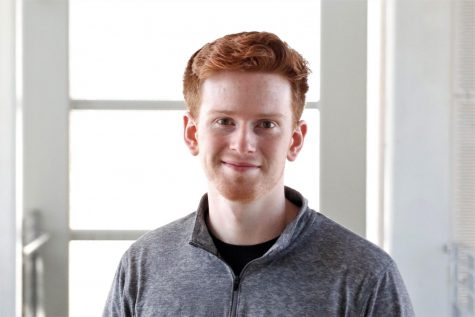International Sports: Caber Toss
Jacob Summerville/The Lion’s Roar
After successfully holding the caber and taking a few strides forward, the athlete tosses the caber into the air in hopes of a good landing. Caber tossing was one of the several sports played at the Louisiana Highland Games and Celtic Festival.
As one of several traditional Celtic games, caber tossing tests athletes’ strength, balance and coordination.
Caber tossing originated in Scotland, and although the exact date of origin is unknown, an article by Collins dictionary cites “tossing of ye barr” to be first mentioned in 1574 at a military meet. At these meetings, different clans would compete against each other in feats of strength. The word “caber” derives from the Gaelic term “cabar” or “kaber,” which means “wooden beam.”
The sport is played with a wooden pole ranging from 16-22 foot tall and between 100-180 pounds. One end is curved off so that the thrower has a better grip.
The thrower has an assistant help them stand the pole perpendicular to the ground. Once the thrower can hold the pole, they can begin to carry out their toss. For an ideal toss, the thrower will pick up the pole from the bottom, take several steps forward, thrust the beam up and hope that once the pole lands, the curved-off side is now opposite of the thrower.
The objective of caber tossing is not for distance but for accuracy. The pole starts in a 6 o’clock position, where at the moment it is being thrown, the end of the pole that the thrower is holding faces the thrower. A perfect toss consists of the pole flipping in the air and for the curved-off side to face perfectly away from the thrower. This is called a 12 o’clock toss. Throws that are not perfect have terms such as 3 o’clock and 10 o’clock, which are used to describe the angle of the caber’s landing. Another common way of recording a throw is to use specific degrees.
In the present day, caber tossing is played most notably at the Highland Games, a localized series of competitions held across the world. The Louisiana Highland Games and Celtic Festival took place from March 30-31 at the Lamar Dixon Expo Center in Gonzales. Along with the caber toss, other athletic events included the Clachneart, weight throw, sheaf toss and weight toss.
Julie Wiggers, chief of games for the LHGCF, explained that the Louisiana Highland Games started in 1999 in Jackson. The title for the games changed to Swamp Celts in the 2000s but changed to its current name in 2016.
Wiggers shared that practice events are held by the LHCCF, and the Texas Celtic Athletic Association judges the games.
“They’re the responsible party, but then at the same time, we do train people to do this,” said Wiggers. “A lot of the athletes that are here compete all over the United States, and this is a sanctioned event, which means that the scores that they get carry nationally.”
Rick Thompson, an athlete who competed in this year’s Louisiana Highland Games, attempted the caber toss for the first time. He explained that he prepared for the games with weight training, but more specifically, he watched videos of the caber toss to familiarize himself with the form.
Even without prior experience with the sport, Thompson expressed that he enjoyed playing.
“It’s a lot more loose and more relaxed,” said Thompson. “I think the atmosphere is less competitive than other sports, a lot more people just having fun.”
Thompson recommended anyone who is interested in trying the caber toss to jump into the process.
Thompson shared, “Come to a competition just to get your feet wet and see if it’s something you’re interested in.”
Your donation will support The Lion's Roar student journalists at Southeastern Louisiana University.
In addition, your contribution will allow us to cover our annual website hosting costs.
No gift is too small.

Jacob Summerville, a history and political science major, has worked at The Lion's Roar since September 2017. A native of Greenwell Springs, LA, Jacob...







